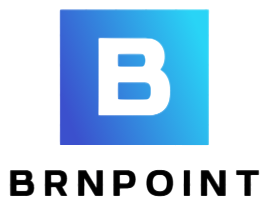The Role of GEO vs LEO Search Optimization in Competitive Digital Landscapes
Search optimization has evolved into a strategic tool that shapes visibility and engagement in digital landscapes. Businesses now leverage advanced techniques to connect with their target audience more effectively. GEO Geosynchronous and LEO Low Earth Orbit search optimization offer unique advantages for improving online presence, refining content strategies, and enhancing search engine rankings. Understanding the role of these methods allows brands to tailor campaigns, reach precise demographics, and outperform competitors by aligning technical optimization with user intent.
Understanding GEO and LEO Search Optimization
GEO search optimization focuses on localized, region-specific strategies. It ensures that content and websites appear prominently for users within a particular geographic area. This method is ideal for businesses targeting regional customers or managing multiple locations. LEO search optimization, on the other hand, emphasizes broader coverage and faster indexing. It helps websites gain visibility across wider digital spaces while maintaining relevance for niche topics. Key differences include:
- GEO targets local search queries and location-specific keywords.
- LEO improves global indexing speed and content visibility.
- GEO is effective for businesses relying on foot traffic or local services.
- LEO is suitable for digital-first brands seeking broader reach.
Optimizing for both methods ensures a balanced approach. For example, you could try here combining GEO techniques with LEO indexing for campaigns that need both local authority and global presence.

The Advantages of GEO Optimization
GEO optimization provides measurable benefits for businesses aiming to dominate regional markets:
- Improved local search rankings.
- Higher engagement from nearby users.
- Increased footfall or service inquiries.
- Strengthened brand authority within specific locations.
By targeting local search behavior, GEO optimization allows businesses to appear in maps, local directories, and region-specific content searches. This helps brands connect with audiences who are actively seeking nearby products or services.
The Benefits of LEO Optimization
LEO search optimization enhances overall digital presence by boosting speed and reach:
- Faster indexing on search engines.
- Better visibility across diverse regions.
- Increased traffic from niche search queries.
- Strengthened global SEO strategy.
LEO methods ensure that websites remain relevant across wider digital spaces and are quickly discoverable by search engines. Brands benefit from enhanced content distribution and increased authority in their niche.
Integrating GEO and LEO for Competitive Edge
Combining GEO and LEO search optimization offers a comprehensive strategy:
- Use GEO to dominate local markets and improve targeted engagement.
- Apply LEO to increase indexing speed and expand reach globally.
- Analyze performance metrics to refine campaigns.
- Leverage both methods for long-term SEO growth.
Brands that integrate GEO and LEO strategies can maintain a strong local presence while also expanding their digital footprint. This dual approach ensures that marketing efforts capture both local and global opportunities. The role of GEO vs LEO search optimization in competitive digital landscapes is critical for businesses seeking measurable visibility and engagement. GEO enhances local relevance, while LEO accelerates global reach and indexing. A combined strategy allows brands to maximize audience targeting, improve rankings, and maintain authority in both regional and wider digital spaces. By aligning these techniques with business goals, companies gain a competitive edge, ensuring sustained growth in dynamic online environments.

